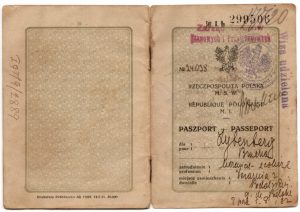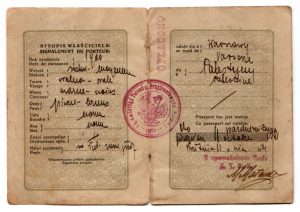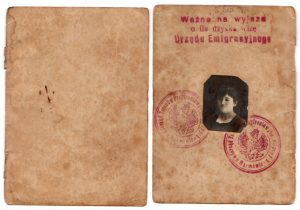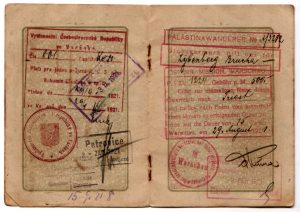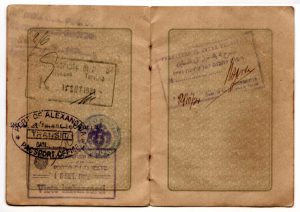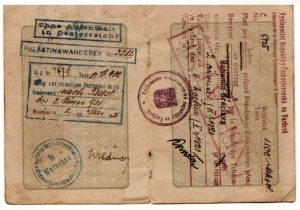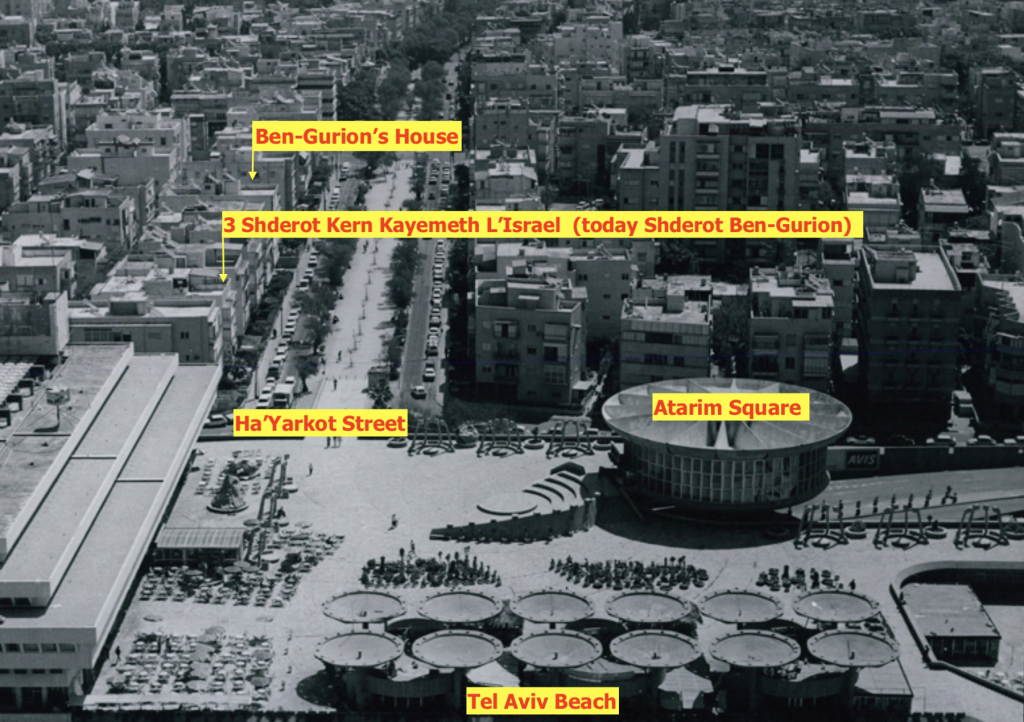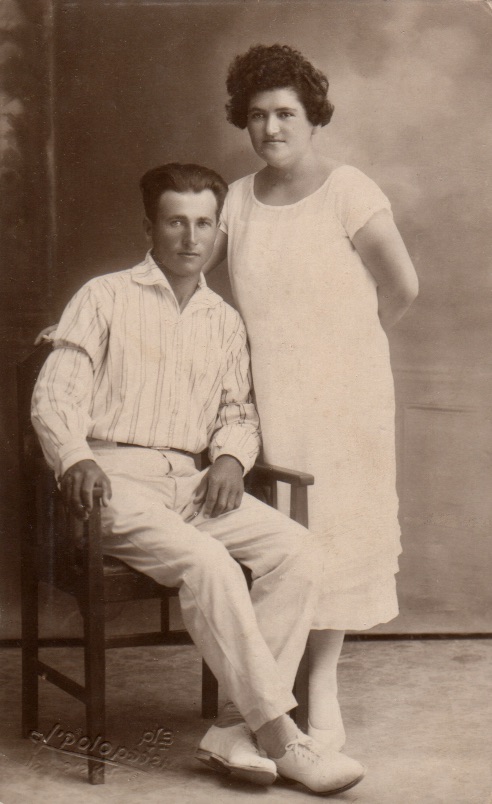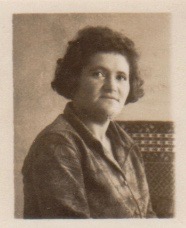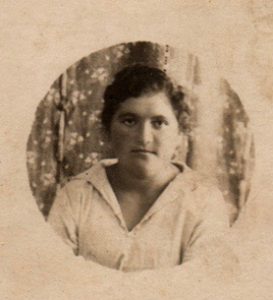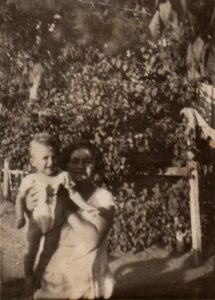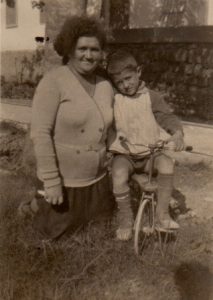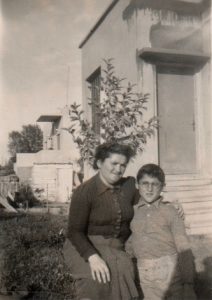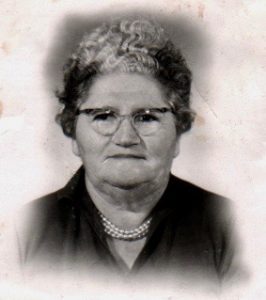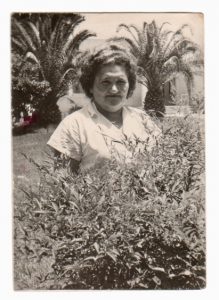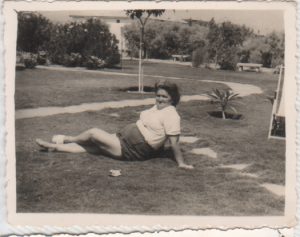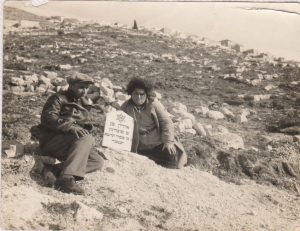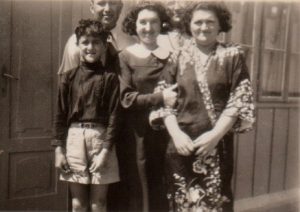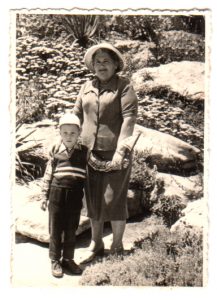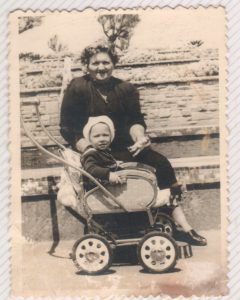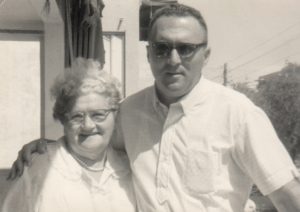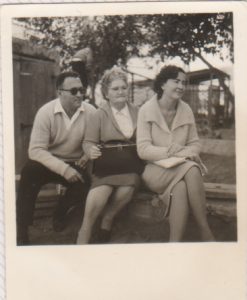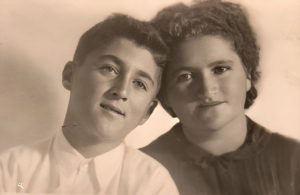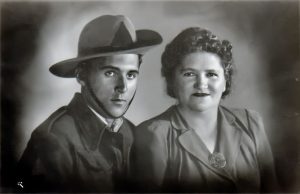Bracha Pomerantz nee Zibenberg
1900-1975
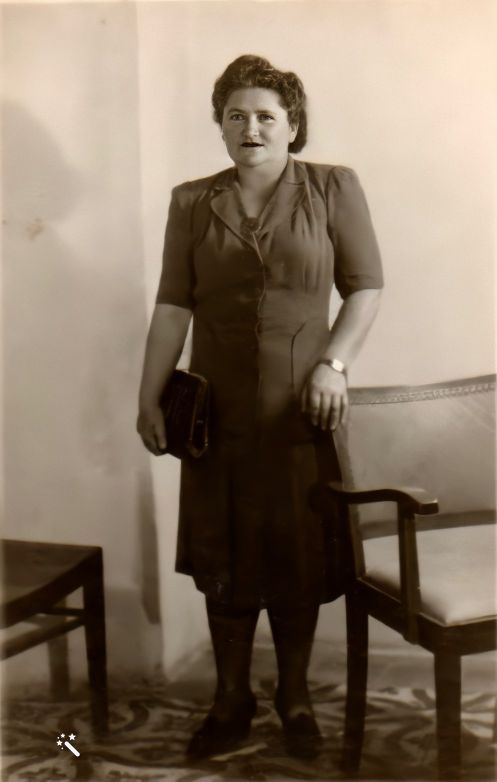
Bracha Pomerantz nee Zibenberg was born in 1900, in Derazhno (Derazne), Ukraine to Yechiel Ha’Cohen Zibenberg and Tova Gitel. Her older brother, Joseph was born in 1898, her brother Meir was born in 1906 and her sister Nechama was born in 1907. Her mother, Tova-Gitel died circa 1915. The father got remarried to a woman by the name of Eidel. They had three children, whose fate is unknown (one of the girls, Genia was murdered in the Holocaust). Bracha and her brother Joseph, immigrated to Israel in 1921, along with group of young pioneers from Ukraine. Her brother Meir and sister Nechama immigrated to Israel at a later date.
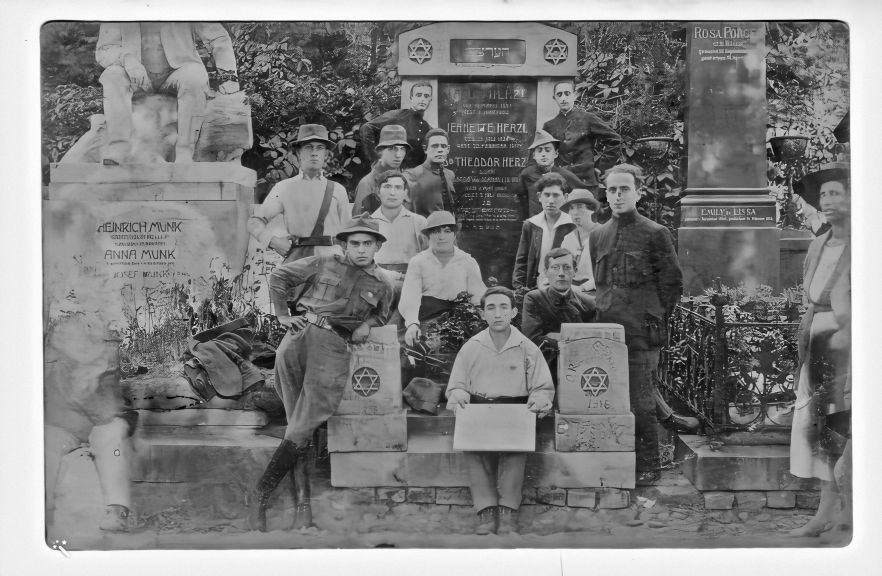
In August 1921, on the way to Israel, Bracha (in the middle), Joseph (to her right) and a group of young pioneers, stopped in Vienna, Austria to visit Theodore Herzl’s grave and pay their respect to “our leader,” Bracha wrote on the back of the photo.
Herzl died on July 3, 1904 and stipulated that he should have the poorest-class funeral without speeches or flowers. “I wish to be buried in the vault beside my father, and to lie there till the Jewish people shall take my remains to Israel.” In August 1949, 28 years after Bracha visited his grave, his remains were moved from Vienna to be buried on top of Mount Herzl in Jerusalem, named in his memory.
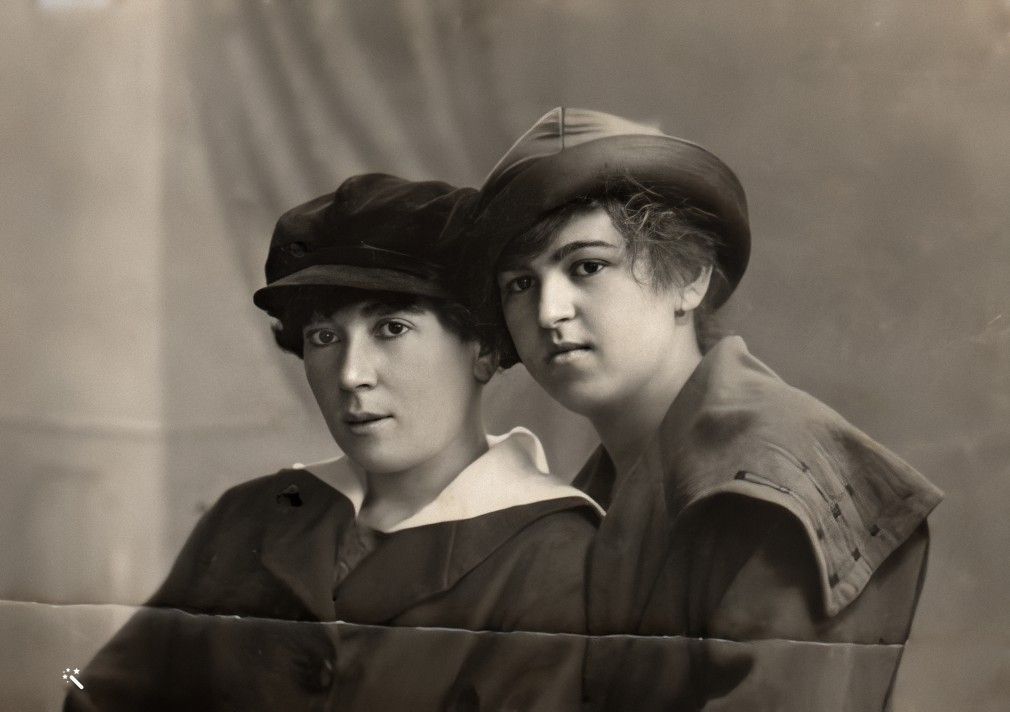

On the back of the postcard the following inscription is written
To my dear and wonderful (or nice and sweet) Brucha. In remembrance (of our) 4 month long friendship while staying in Peremyshl (Przemyśl). June 13, 1921 Basya Kantor
Bracha is on the right
After Bracha left her home in Derazhno (Derazne), Ukraine, on the way to Palestine, apparently, she stayed at Prezemysl, waiting to get a traveling ID and visa to Palestine
Polish Passport/Identification Card for Bracha Zibenberg, 1921
The ID Card’s British stamp indicates, visa No. 9062 for a journey from Trieste, Italy, to Egypt and Kantara (the name Jaffa was crossed over). Bracha’s entry stamp to Palestine is dated: October 2, 1921, the day of arriving in the promised land.
Olym Camp - Tent City, 1921
Upon arriving in Israel, Bracha (third row, third left, arrow direction) lived in an immigration “Tent City” situated at the Tel Aviv beach.
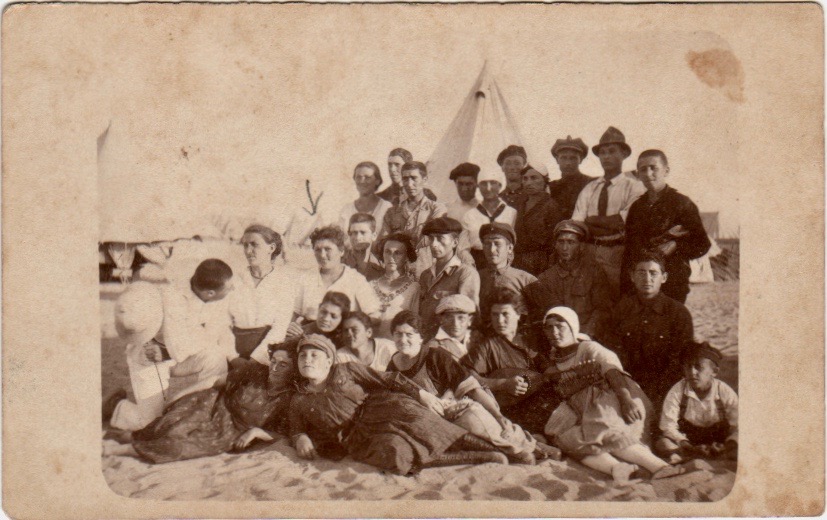
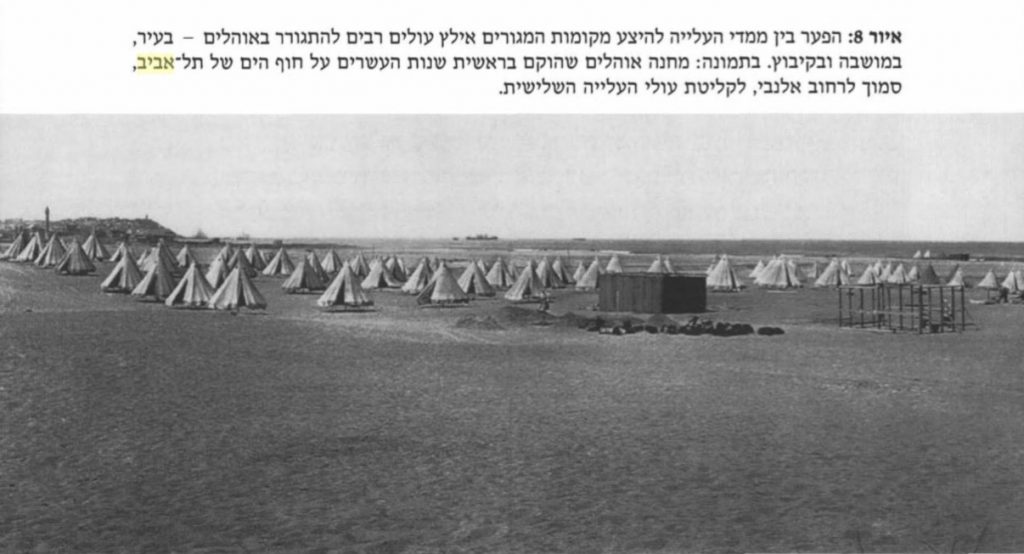
Tent City, Tel Aviv 1920 – From Prof. Aviva Halamish's book, From National Home to a State in the Making: History of the Jewish Community in Palestine between the World Wars, Vol. I, Tel Aviv 2004
The First Workers Neighborhood "A" in Tel Aviv
The first working neighborhoods in Tel Aviv were built by the Histadrut or the General Organization of Workers in Israel. The neighborhoods were established with the aim of freeing the urban worker from the burden of high rent, improving living conditions and creating labor-workers culture. The first Workers Neighborhood ‘A’ was built between 1930-1931 and had thirty-five single-story private homes with an auxiliary half dunam farm adjacent to each home. It was designed by the engineer David Tuvia on a 30-dunams (7.5 acres) site. It was allocated on an existing almond vineyard owned by the Jewish National Fund, located between Shderot Keren Kayemet L’Israel (today’s Ben-Gurion Boulevard) and La’sal Street. The price of each house was about 350 lira Eretz-Israelit and most of the landowners paid it in installments. Pommy's father, Aaron Pomerantz, was the supervisor in charge of building the neighborhood (until he fell ill). The family home was located at 3 Shderot Keren Kayemet L’israel. David and Paula Ben-Gurion (today, Beit Ben-Gurion), lived few doors east at 17 Keren Kayemet.
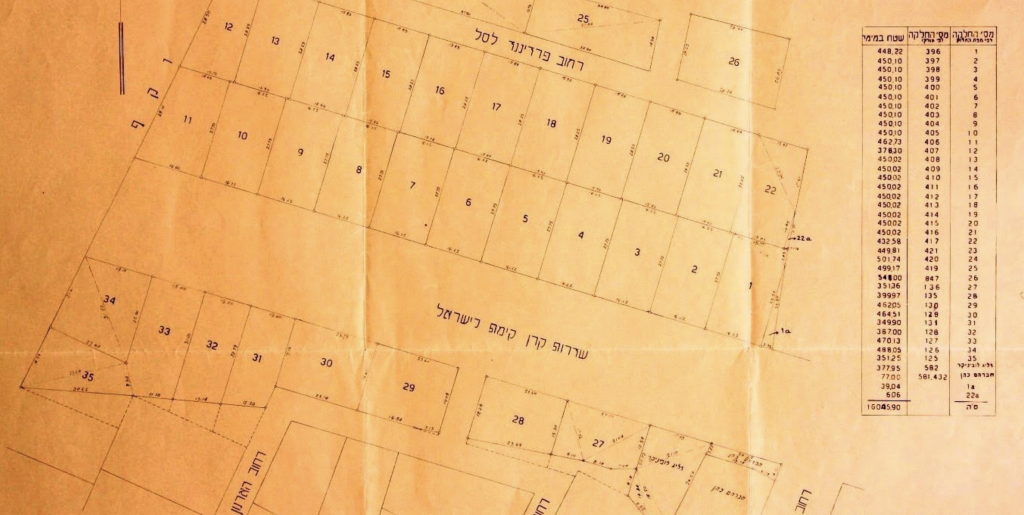
The first working Neighborhood (Shchunat Ha'Poalim A). Aaron and Bracha Pomerantz's Parcel # 10. Courtesy, Tel Aviv Urban Encyclopedia
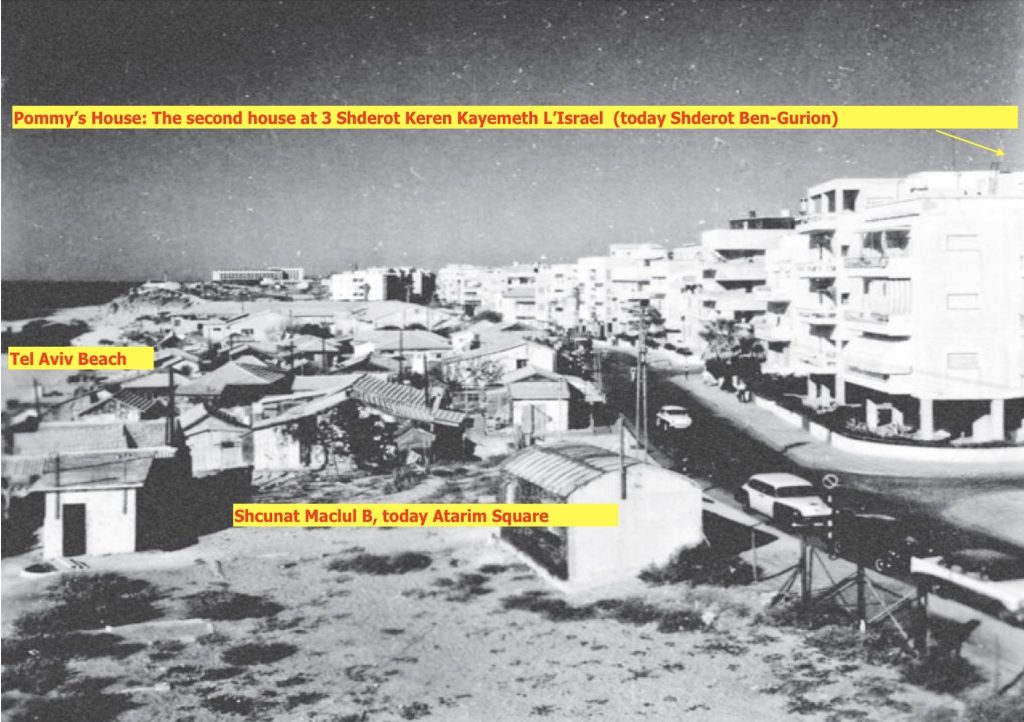
Shcunat Maclul B (today, Atrim Square) POV north. Photography: Willy Folander, 1959. Courtesy Tel Aviv Urban Encyclopedia
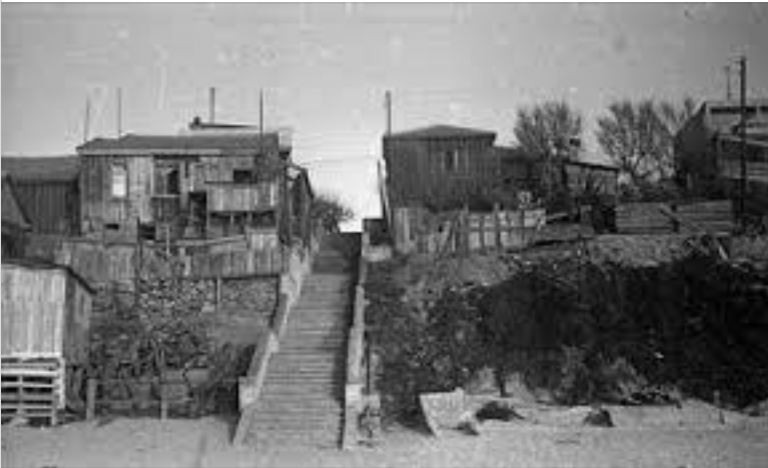
The descent into the beach, in the end of Shderot Keren Kayemeth via Shcunat Maclul, today Atarim Square. Courtesy, Nostalgia Online, preservation of israeli culture
Bracha Hides Illegal Immigrants
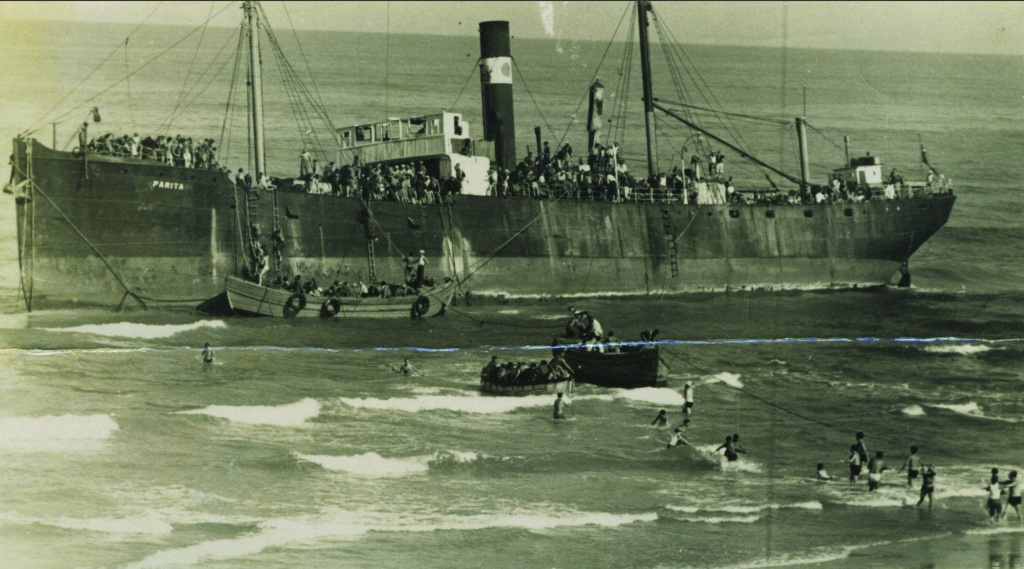
Illegal immigrants (Ma'apilim) to Mandatory Palestine descending from the ship Parita on the beach in Tel Aviv, about fifty meters from
the Ritz Hotel on Hayarkon Street. Walter Zadek photographed on August 22, 1939
Aliyah Bet (Aliya Bilty Legalit) was the code name given to Illegal immigration (Ma’apilim) by Jews to Mandatory Palestine between 1934-1948. It was a major method of immigration, because the British, by setting the quota at mere 18,000 people per year (Aliyah Aleph), virtually terminated the option of legal immigration. Before, during and after World War II large number of immigrants arrived by land and sea, from Europe and the Middle East, in defiance of the British Mandatory government’s order. Tel Aviv beaches were a popular destination for ships carrying illegal immigrants. The “mother” ship anchored, most of the times, outside the territorial waters of the Mandate and the illegal immigrants were sent ashore in smaller vessels and lifeboats. Residents of Tel Aviv beach communities would gather on the shore to welcome their European brothers who escaped Nazi persecution and genocide. They assimilated among the new comers, to confuse the British police with who is who.
Bracha’s home was the second house from Ha’Yarkon Street (a major street which runs roughly parallel to the coastline in Tel Aviv), next to Atarim Square (of today) at 3 Shderot Keren Kayemeth L’Israel. Bracha would receive word from the Haganah about the ETA and location where the illegal immigrants would disembark from the small boats. She would go down to the beach, meet with her Haganah’s contact person and gather several Jewish refugees, taking them to her home. There she served them hot meal, offered a hot shower and fresh set of clean clothes. The immigrants would nap for few hours and at dawn, the milk trucks from the various kibbutzim will arrive to pick them up and disperse them throughout the countryside.
Bracha The Pioneer
Bracha (marked by the arrow and holding a hoe). She worked in construction, paving roads, cook, nurse and any many other jobs


< Bracha in the middle, holding a saw
Bracha (second row, second from right, holding a shovel) with group of construction workers

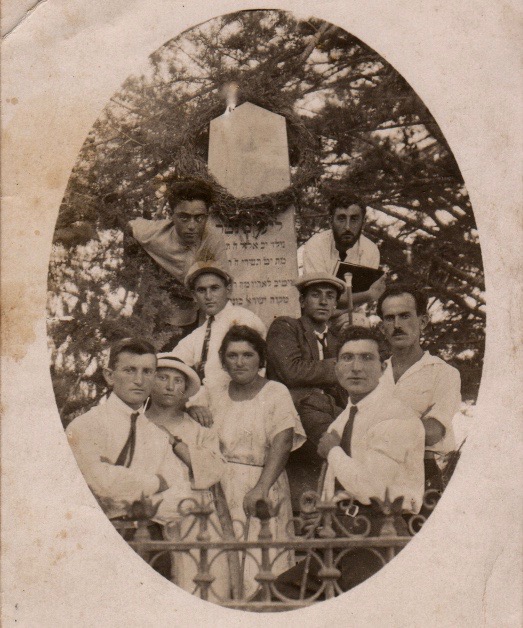
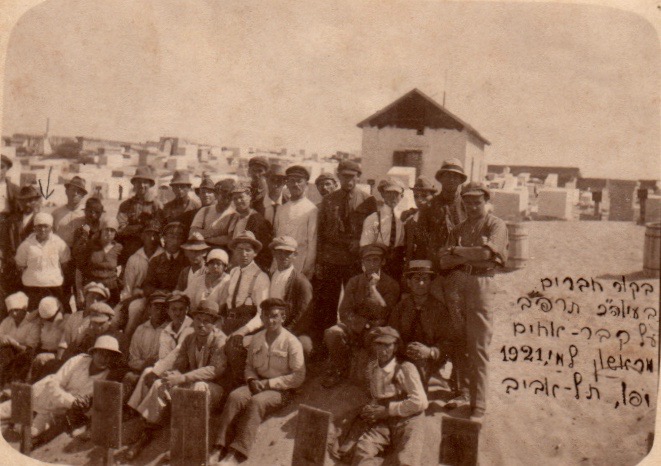
Bracha (middle row, left) visiting the Mass grave of Jewish victims of the 1921 Jaffa riots at Trumpeldor cemetery, Tel Aviv
Bracha with her brother Joseph and group of friends during Friday night dinner


Bracha, second row, second from left (holding a saw). This is one of the only picture, in which Bracha is smiling
Bracha (top raw, second from left) with group of pioneers
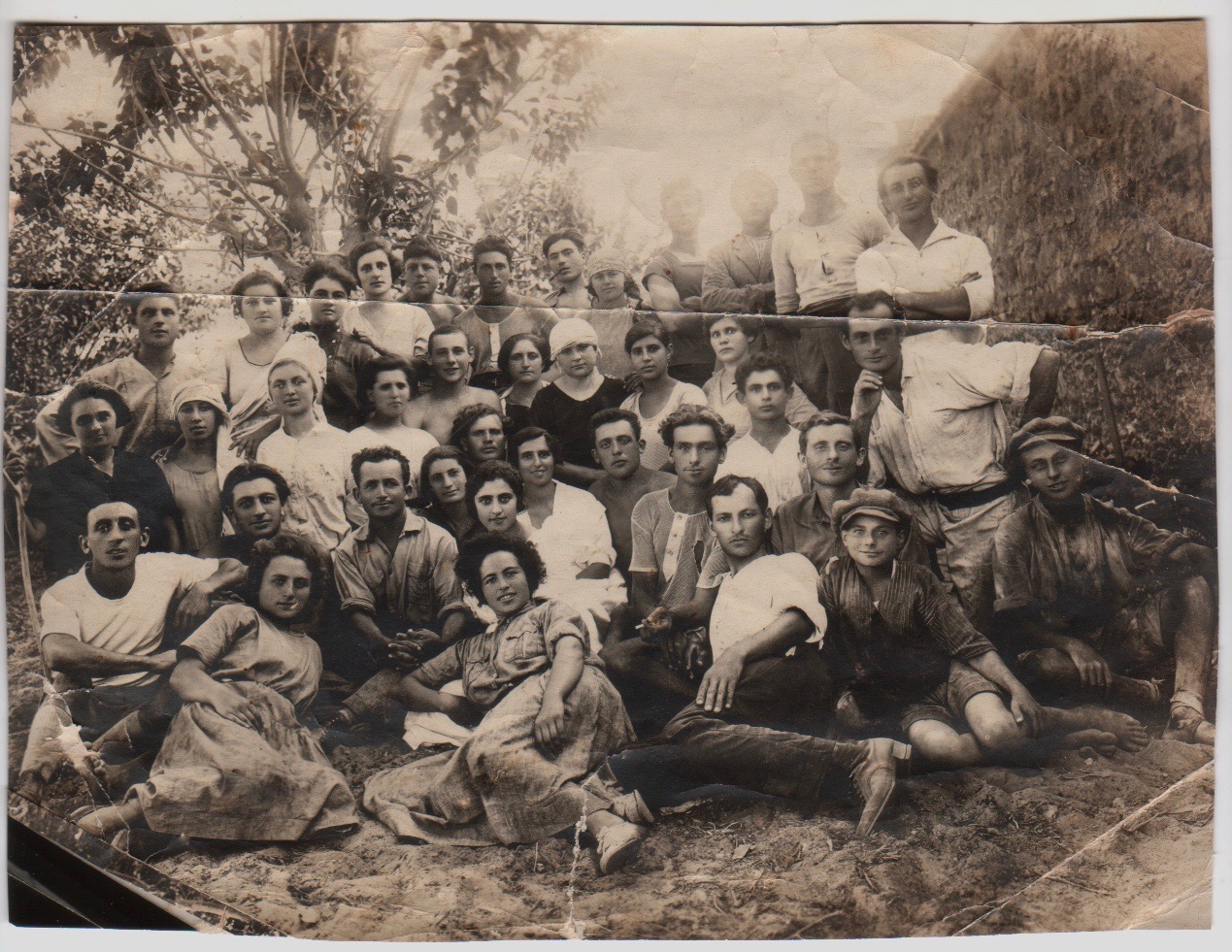
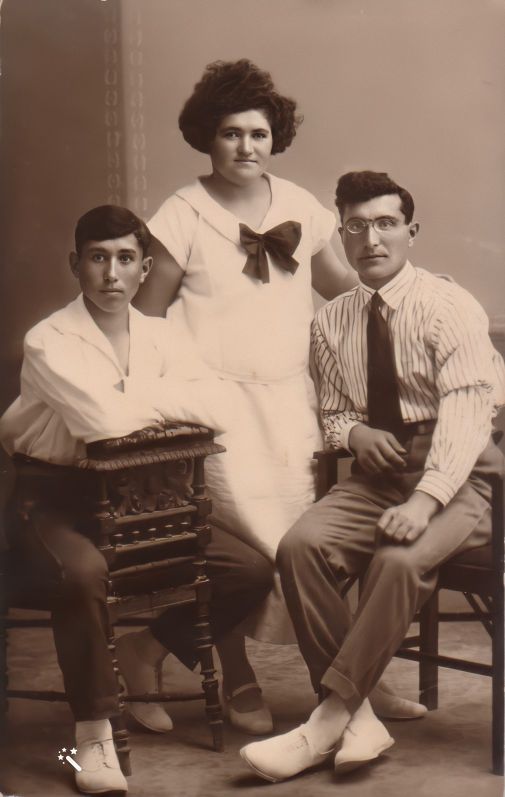
Bracha with her older brothers, Joseph Zohar (right) and Meir Zohar
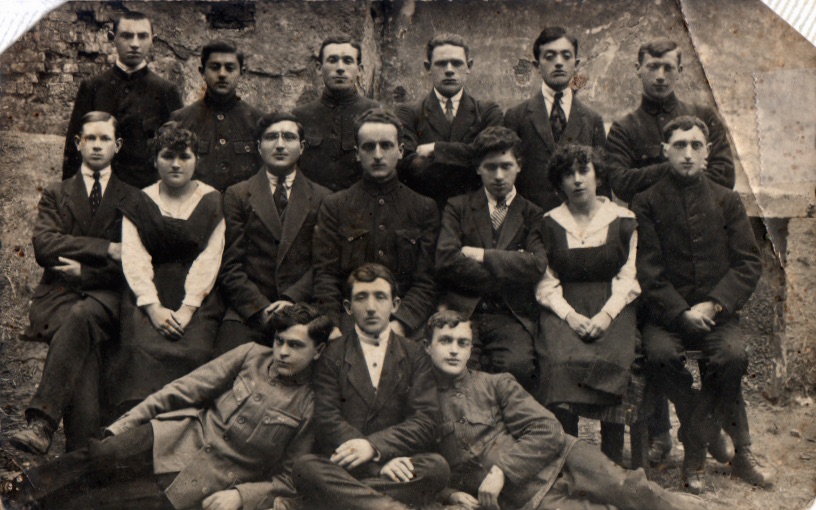
Bracha (middle raw, second from left) next to her brother (3rd from left), Joseph with a group of pioneers
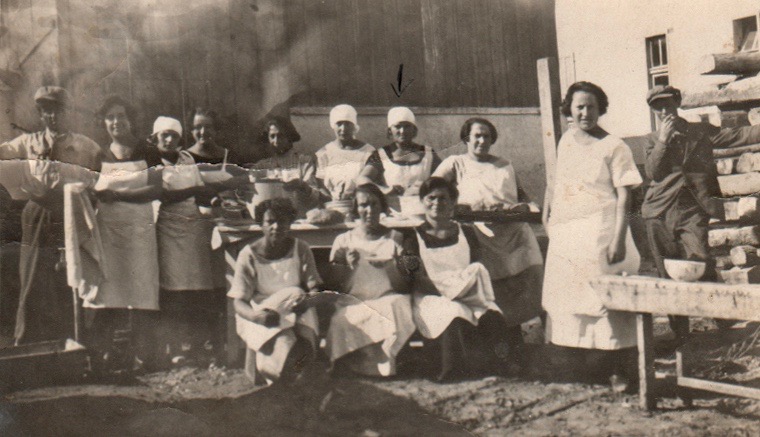
Bracha (Top raw, second from right) with group of cooks
Bracha with her grandchildren
Ronnie and Etti, 1964

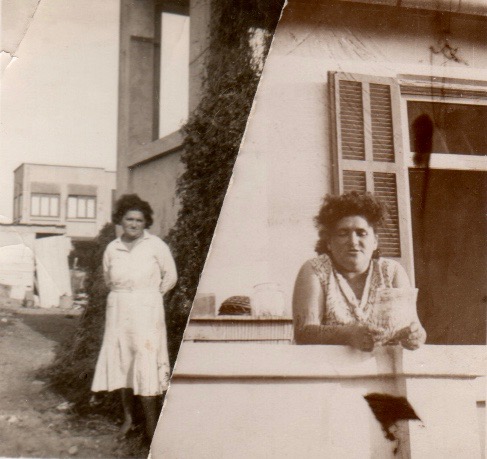
Bracha at Home 3 Keren Kayemet
Bracha with Pommy and Moody, 1964

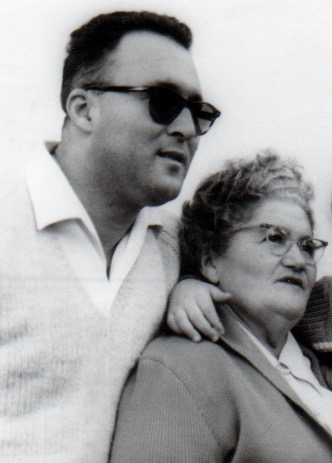
Bracha and Pommy, 1964, Tel Aviv

Bracha (on the right), her brother Meir Zohar, Pommy (in the middle)
On the left, Bracha's sister Nechama Milman and her husband, Ben Zion Milman, 1932
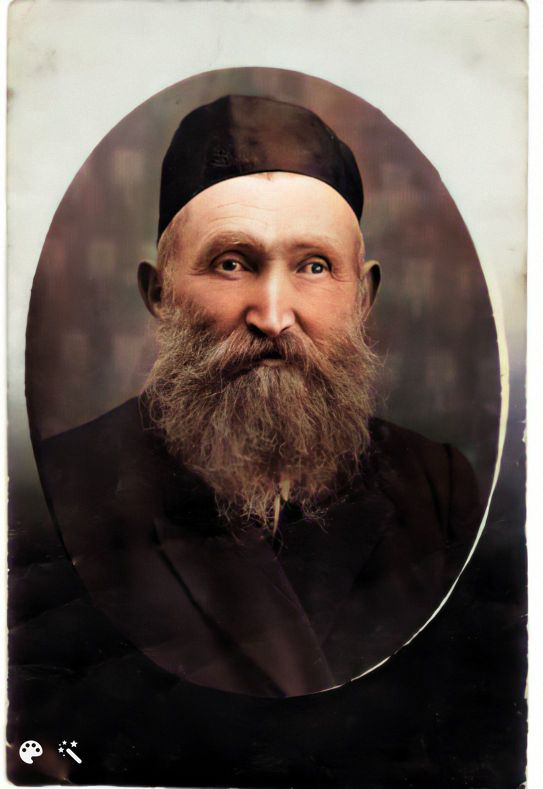
Yechiel (Ikhel) Ha'cohen Zibenberg. Born circa 1875
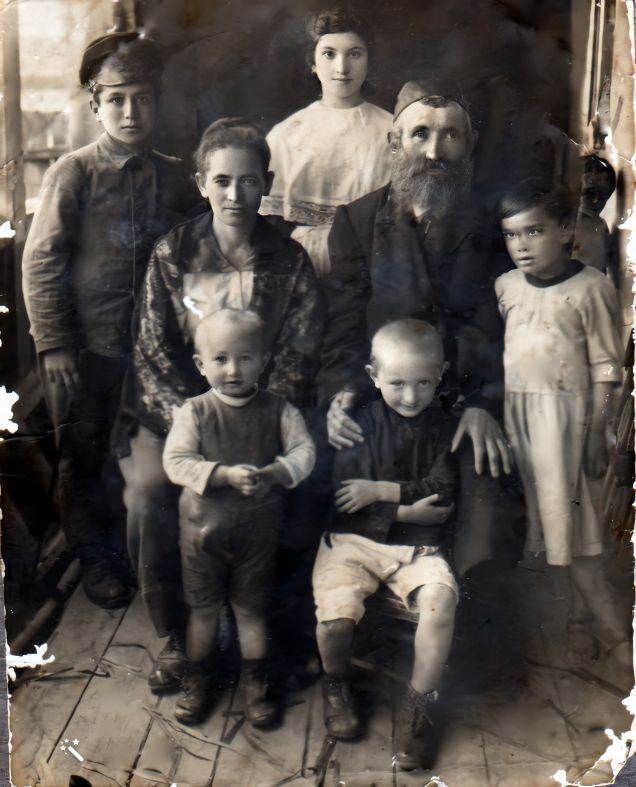
Yechiel Zibenberg and his second wife, Eidel with their 3 children
In the back, Nechama and her brother Meir. Circa 1921-22
At the time, Bracha and their brother, Joseph, already made aliyah to Israel

